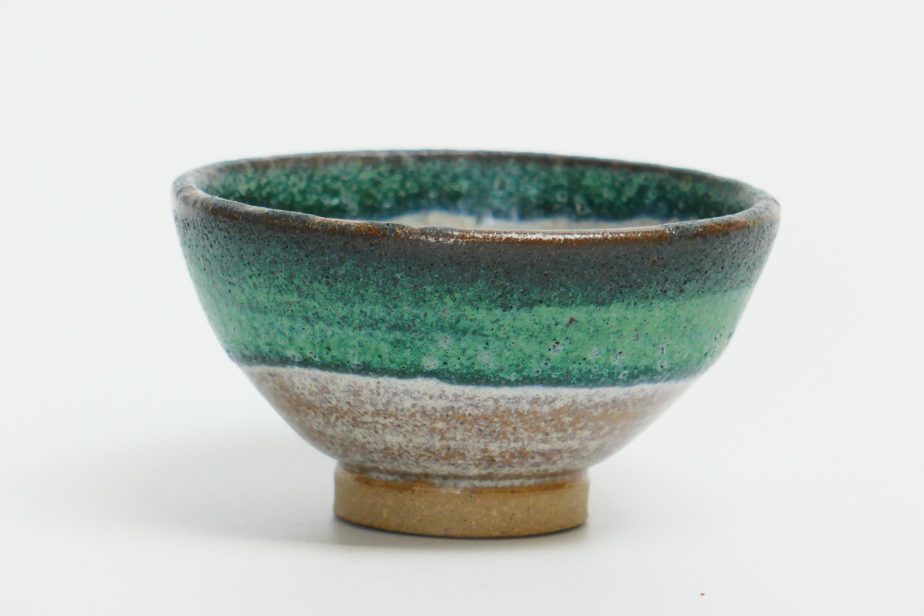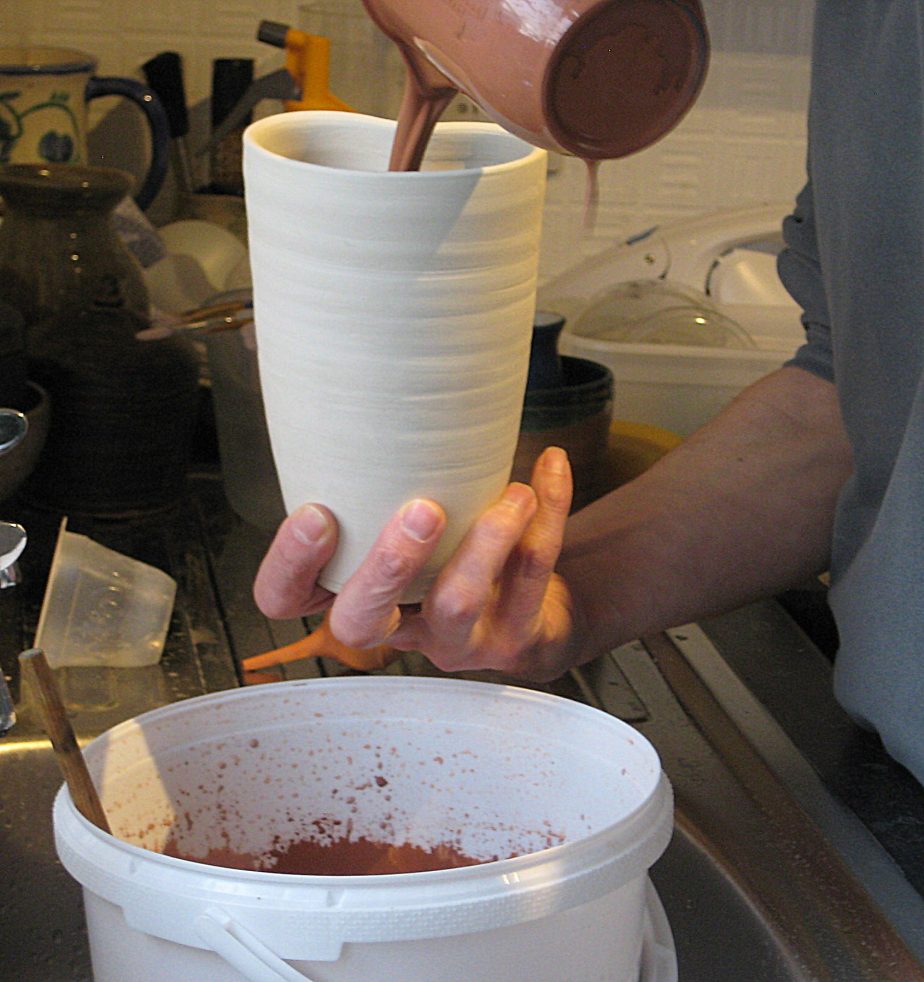I’ve been working on some new glazes and these two have worked really nicely on this little dish (7cm diameter). Both the grey and the green use a titanium mineral called Rutile. Green glazes often use copper or chromium which I wanted to avoid. Here the green is created by the interaction of the rutile with a little cobalt (which usually comes out blue). I love the brilliance of the lighter green against the deeper tones.
For the technically minded, the green is sensitive to the underlying base glaze chemistry. The grey here is my standard magnesium silky matt base glaze with added rutile. Using cobalt with this would produce blue instead of green. To get the green I’ve had to use a different base glaze.
I still have more testing to do on this glaze before I’m happy with it – although I love the colours it’s very powdery and doesn’t apply well to unfired pots so I have to do more work on the physical chemistry to make it a better fit for my raw glazing processes. Oh well, back to the test tiles…

